It seems that every year around this time, school districts around the country report not being able to fill all of their open teacher vacancies. Why do these cyclical teacher shortages occur? In this episode of the podcast, we will explore this topic in-depth.
The Edvocate Podcast, Episode 2: How Edtech Companies Should Start the New School Year
As summer reaches its peak, and fall gears up to make its arrival, students, parents, teachers, and administrators are all preparing for the beginning of a new academic year. So many gains were made last year, and they are eager to build upon that success. When we talk about education stakeholders who are concerned with starting the school year off right, we rarely, if ever, talk about edtech companies. They too are an integral part of the school community, as they provide a valuable service.
So how do edtech companies stay on their “A” games to begin the new school year? Not to worry, we have you covered.
Hello, my name is Dr. Matthew Lynch and welcome to the second episode of The Edvocate Podcast. Today, we will discuss back to school tips that will help your edtech company get off to a running start and sustain that momentum until summer break comes around again.
Announcing the Winners of the 2018 Tech Edvocate Awards
Every day, technology innovations transform the way people learn and how educators teach. In the last few years, the edtech field has attracted a lot of talented people, all with excellent knowledge bases and ideas. Though the edtech industry has been around for a few decades now, the last few years, in particular, have seen a surge in investment from both school districts and investors.
The education market is currently worth around $5 trillion globally, and it is forecasted that edtech investment alone will reach $252 billion by the year 2020. This growing investment into edtech start-ups has created some exciting changes in the world of education. Naturally, with increasing capital, the number of edtech companies, products, and thought leaders is also growing. In that spirit of change and innovation, we present the Tech Edvocate Awards.
After 4 months of hard work, we’ve narrowed down the year’s top edtech companies, products, people and more. We solicited nominees from readers in June/July and held online voting from June 1, 2018 – August 21, 2018. The nominee’s performance during the online voting period was used to gauge their popularity, but in no way signaled that they would become a finalist or walk away with an award. The finalists and winners were ultimately selected by a panel comprised of two edtech thought leaders, two PreK-12 teachers, one college professor, two K-12 administrators, one college administrator and two PreK-12 parents. Here are our winners and finalists for 2018. Winners and finalists can access their award seals by clicking here.
Best Lesson Planning App or Tool
Winner: ClassFlow
Finalists:
Best Assessment App or Tool
Winner: MobyMax
Finalists:
Evo Social/Emotional by Aperture Education
Best Early Childhood Education App or Tool
Winner: HeadSprout
Finalists:
KIBO – The STEAM Robot Kit for Children 4 – 7
Canticos Los Pollitos (Little Chickies) App
Best Literacy App or Tool
Winner: Lexia Core5 Reading
Finalists:
Best Math App or Tool
Winner: MATHia
Finalists:
ExploreLearning Reflex
Best STEM/STEAM Education App or Tool
Winner: Vernier Go Direct® Sensors with Graphical Analysis™ 4 @VernierST
Finalists:
FlinnSTEM Powered by IMSA Fusion
Best Language Learning App or Tool
Winner: Sprig Learning
Finalists:
Best Virtual or Augmented Reality App or Tool
Winner: HoloLAB Champions
Finalists:
Best Personalized/Adaptive Learning App or Tool
Winner: Nearpod
Finalists:
AVer CP3Series Interactive Flat Panel
Curriculum Associates i-Ready Mathematics and Reading
Best Coding App or Tool
Winner: CoderZ by Intelitek
Finalists:
Best Gamification App or Tool
Winner: Kahoot!
Finalists:
Best Learning Management System
Winner: NEO LMS
Finalists:
Best Blended/Flipped Learning App or Tool
Winner: FlinnPREP
Finalists:
Best Assistive Technology App or Tool
Winner: Robots4Autism
Finalists:
Best Parent-Teacher/School Communication App or Tool
Winner: Bloomz
Finalists:
Best Collaboration App or Tool
Winner: Boxlight MimioSpace
Finalists:
ADVANCEfeedback by Insight ADVANCE
Snowflake MultiTeach® (NUITEQ®)
Best Tutoring/Test Prep App or Tool
Winner: GradeSlam
Finalists:
Best Classroom/Behavior Management App or Tool
Winner: NetSupport School
Finalists:
Best Classroom Audio-Visual App or Tool
Winner: ActivPanel
Finalists:
Epson BrightLink 710Ui Interactive Laser Display
Best Higher Education Solution
Winner: Study.com
Finalists:
Best Learning Analytics/Data Mining App or Tool
Winner: Otus
Finalists:
Best Professional Development App or Tool
Winner: ADVANCEfeedback by Insight ADVANCE
Finalists:
Best Student Information System (SIS) App or Tool
Winner: Alma
Finalists:
Best Global EdTech Leader
Winner: Dr. Edward Tse
Finalists:
Best Global EdTech Company
Winner: MobyMax
Finalists:
Best Global EdTech Startup
Winner: Learnamic
Finalists:
Best K-12 School Leader
Winner: Dr. Adam Hartley, Fenton Area Public Schools, Genesee County, Michigan
Finalists:
Yvonne Mackey-Boyd, River Roads Lutheran School, St. Louis, MO
Shawn Wigg, Director of Mathematics, Duval County Public Schools
Best Higher Education Leader
Winner: Nichole Pinkard, Professor, Depaul University, Chicago, IL
Finalists:
Anant Agarwal, edx, Cambridge, MA
Best School District Technology Coordinator/Director
Finalists:
John Martin, Inter-Lakes School District, Meredith, NH
Best K-12 Teacher
Winner: Crystal Avila, Socorro High School, El Paso Texas
Finalists:
Cathy Haskett Morrison, Peel District School Board, Canada
Best College/University Professor
Winner: David J. Malan, Harvard University
Finalists:
Nicole Kraft, Ohio State University
Best EdTech PR Firm
Winner: PR With Pananche
Finalists:
J Harrison Public Relations Group
Conclusion
As you can see, there is no shortage of award winners in edtech. With these innovative edtech companies, products and people in mind, it becomes clear that the landscape of education is vast and technology is carving a new path for present and future educators. Well, that does it for the 2nd Annual Tech Edvocate Awards. We will be back, bigger and better in 2019.
The Edvocate Podcast, Episode 1: 8 Attributes of Successful Digital Age Teachers
Regardless of where you go in the world, teachers are the backbone of the education system. Without quality teachers, school districts cannot provide students with the skills that they need to be successful academically. Without teachers, the next generation will not be able to compete in the global economy. These are sureties, and you will find few people who would disagree.
If you have been studying the field of education closely, as we have, you know that it is undergoing a metamorphosis. Students no longer respond to the teacher-centered pedagogy that our forefathers did. No, today’s students are immersed in a technologically advanced world and possess attention spans that last only a few seconds.
Because of this, today’s teacher needs to add a new skill set to their repertoire to be successful. In this today’s podcast, we will discuss the 8 key attributes that successful digital age teachers possess.
Introducing The Edvocate Podcast
For over 15 years, veteran educator Matthew Lynch has written about and researched the field of education. On “The Edvocate Podcast,” he discusses education trends, issues, and futures. To join him on this journey, click the subscribe button so you can be alerted when the first episode goes live.
My Vision for the Future of Neuroscience in Education
Researchers are uncovering how the human brain functions, learns and stores memory. The implications of this work have the potential to create disruptive change. Still in its infancy, neuroscience has the potential to change how educators approach instruction and learning.
I base my vision for the future of neuroscience in education on cooperative interaction between researchers and teachers. Already neuroscientists cannot study learning and memory without the assistance of educators who are working alongside students, and teachers must consider the implications of neuroscience for their teaching.
In the future, you can expect to see a strong focus on learning and memory, a strengthened partnership between science and education, and improved student achievement.
Learning and memory
We already know that learning takes place as a result of synaptic plasticity, or the ability of nerve cells in the brain to increase or decrease connectivity.
To say that the brain grows more brain cells is a misconception. The brain cannot produce more cells to increase learning and memory. Instead, it strengthens the nerve endings on either side of the synapses, thereby creating a stronger connection. By adding layers of connections, the brain’s memory is reinforced. This process is called plasticity.
The implication for the future of neuroscience in education is that teachers will have to find ways to strengthen synaptic plasticity. It’s unlikely, however, that they will be able to help build these connections with the aid of digital technology.
The science-education partnership
Medicine and science often lead the way for schools by providing extensive brain theory research. In the future, educators will continue to take their cues from science, and doctors and scientists alike will use the techniques developed by educators to maximize learning and memory.
In the future, educators and science will collaborate on gathering and analyzing research. The science-education partnership will improve learning and memory, and it will likely shorten the learning process and increase memory.
Tech and medical science education go together, and the applications of scientific theory and discovery to educational practice are clear. Researchers have proven the cognitive connection between digital gaming and learning. Learning comes about as a result of edtech games and simulations that incorporate adaptive branching and require higher order thinking skills.
Improved student achievement
According to Scott Bolland, improved engagement comes about when we align learning with brain theory.
That improved engagement is the result of better synaptic plastic, which in turn is developed through digital technology that provides authentic simulation as well as stimulation.
The future of neuroscience in education looks promising because I visualize a future where neuroscience leads instructional practice and instructional practice influences neuroscience.
What’s Happening in the Brain of a Multi-Lingual Child?
Have you ever considered what might be going in the mind of someone who happens to be multilingual? Modern research continues to point to the fact that individuals who speak more than one language have a tremendous advantage. The brain becomes permanently shaped and influenced by the addition of an extra language, but is that where it stops?
It turns out that there may be more going on inside the mind of a multilingual child than we initially imagined. Researchers are now finding that there are a few hidden benefits for kids who can speak more than their own mother tongue. If you’ve been wondering whether a foreign language class could help your child, take a look at these primary benefits of being bilingual.
Improved Executive Function
If you can speak in more than one language, you have to consistently make a choice regarding which one is appropriate to use at any given time. The choice represents a small form of self-control as you select the correct language and consciously choose to ignore the other. This subtle decision-making process has been shown to improve executive functioning in children.
The development of language can help to promote faster cognitive development in children, particularly where it relates to executive functioning. They may exhibit more self-control and the ability to better regulate themselves when they have two languages at their disposal.
Better Test Scores
It may be surprising for you to learn that multilingual children tend to have higher test scores than their English-speaking only counterparts. Those students that continue to actively refine both languages in an educational setting tend to perform better and have higher reading levels. According to one study on this phenomenon, dual-language students often performed one full grade level higher by the end of middle school compared to English-only peers.
More Empathy
Students who speak more than one language often develop a better sense of empathy toward others. A bilingual student has more opportunity to interact with people who may be from a different walk of life. They can imagine what it’s like to live in a world where someone else doesn’t understand the language. Because of their own improved executive functioning, they can even switch gears to use the other language appropriately.
Students that consistently interact with others who are different from them are shaping what the world around them looks like. As a result, their worldview expands tremendously and true diversity is born. This is even beneficial for those who need the multilingual child’s translating abilities. They could feel more included in the community when they have someone else to connect with.
Speaking multiple languages gives children a major advantage over their peers. Inside their brains, so many different tasks are taking place that concretely changes the pattern of their behavior. While the exact benefits aren’t always measurable, there’s no denying that learning a foreign language is a worthwhile pursuit.
The Edvocate’s 2018 EdTech 20: A Ranking of 20 Global Edtech Influencers
Who are the biggest edtech influencers in the world? The Edvocate editorial team has exhaustively researched the movers and shakers of edtech and selected 20 global influencers. To frame our methodology, we decided to define edtech influencer broadly. On this list, you will find administrators, bloggers, journalists, policymakers, researchers, innovators, businessmen, activists, etc. who are transforming the edtech space as we know it.
The influencers that we chose are all active in the area of edtech, doing something influential in 2018, well-known throughout the edtech landscape, and making an impact globally. We are excited to witness how these influencers continue to change the world this year, and we are anxious to see who will stand on the shoulders of these giants, and as a result, make our list next year. Without further ado, here is The Edvocate’s 2018 EdTech 20: A Ranking of 20 Global Edtech Influencers.

CEO and Chairman of the Board of Directors at K12
What His Current Focus Is: Mr. Davis is the CEO of K12, a technology-based education company and leading provider of online curriculum and school programs for students in pre-K through high school. As CEO and Chairman, he focuses on strengthening the K12 organization, its operations, and its academic programs. He is the person responsible for K12’s meteoric rise over the last decade.
How He’s Transforming the EdTech Space: Under his helm, K12 is driving innovation and advancing the quality of education by delivering state-of-the-art, digital learning platforms and technology to students and school districts across the globe. K12’s curriculum serves over 2,000 schools and school districts and has delivered millions of courses over the past decade. K12 is a company of educators providing online and blended education solutions to charter schools, public school districts, private schools, and directly to families. The K12 program is offered through more than 70 partner public schools and school districts and public and private schools serving students in all 50 states and more than 100 countries.
What His Background Is: Mr. Davis received an MBA from the Wharton School of the University of Pennsylvania, an MS in Engineering Computer Science at the Moore School of the University of Pennsylvania, and a BS in Engineering from Stevens Institute of Technology.
What May Surprise You About Him: With a personal passion for serving children and helping them achieve higher levels of success, Mr. Davis founded the JANDT Foundation to aid minority children in attending private and parochial schools in the Washington, DC area.
Twitter: @K12bloggED
Email: N/A
2. Sal Khan

Founder and Executive Director of Khan Academy
What His Current Focus Is: Sal Kahn is an American educator who has founded both an online education platform called the Khan Academy, as well as a physical school, the Khan Lab School. The Khan Academy is a free service that offers over 6500 video lessons on a range of topics and subjects, through primarily focused on math and science. The Khan Academy’s YouTube page has more than 2.9 million subscribers.
How He’s Transforming the EdTech Space: Khan’s goal is to reach as many students as possible, regardless of resources, and so his mission is to make his lessons accessible and free. Kahn’s videos, therefore, have become vital educational resources for rural African and Asian students.
What His Background Is: Kahn graduated from MIT with a Bachelor’s of Science in math, electrical engineering, and computer sciences; he then earned an MBA from Harvard. Kahn worked hedge fund analyst. As his online tutoring and education videos gained popularity, he quit his hedge fund position in 2009 to shift his focus to crafting and developing his online education endeavors.
What May Surprise You About Him: The Khan Academy began as a way for Kahn to tutor his cousin long-distance.
Twitter: @khanacademy
Email: [email protected]
 Principal Product Manager on the #MicrosoftEDU Team
Principal Product Manager on the #MicrosoftEDU Team
What His Current Focus Is: Mike Tholfsen is the Principal Product Manager on the Microsoft Education team. He mainly focuses on OneNote Class and Staff Notebooks, Learning Tools and Microsoft Teams. He has spent over 20 years at Microsoft, helping to shape their education division. Mike works with educators and pupils from all over the world to create products that improve student outcomes. He works tirelessly to promote Microsoft Education and their products. This has resulted in an increased share of the edtech market for Microsoft.
How He’s Transforming the EdTech Space: Mike is transforming the edtech space by creating products that 1. Help teachers maximize their productivity; 2. Level the playing field for students from minority groups and those that have special needs; and lastly 3. Take advantage of the power and promise of personalized learning and artificial intelligence.
What His Background Is: Mike has a B.S. in Information Systems from the University of Washington. Although he does not have a background in education, he has worked hard to come up to speed. He has a firm grasp on the intersection of education and technology, as evidenced by the wonderful products that have been released under his watch.
What May Surprise You About Him: Mike’s favorite book is The Fourth Turning, by William Strauss and Neil Howe.
Twitter: @mtholfsen
Email: [email protected]
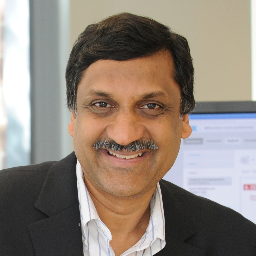
Founder and CEO of edX
What His Current Focus Is: Professor Anant Agarwal is currently a professor of Electrical Engineering and Computer Science at the Massachusetts Institute of Technology. He is also one of the founders and the CEO of edX, a MOOC (massive online open course forum) and non-profit organization. He created and taught the first edX course – one on circuits and electronics – which boasts an enrollment of over 155,000 students from over 160 countries across the world. In addition to his work at MIT and on edX, Anant hacks on an online circuit’s lab called WebSim in his free time.
How He’s Transforming the EdTech Space: Anant has long been an outspoken advocate of MOOCs, which strive to make education accessible to learners at low or no cost, worldwide. edX draws courses from the nation’s – and the world’s – leading educational institutions. They offer many free courses, and students can choose to pay a fee for a certificate. These fees help continue to fund free classes.
What His Background Is: Anant was born in Mangalore, India in 1959. He studied at St. Aloysius Mangalore, the Indian Institute of Technology Madras, and received his Ph.D. in Electrical Engineering from Stanford University. In addition to edX, Anant has worked on various engineering and computer technology endeavors including Sparcle, Alewife, Virtual Wires, LOUD, Oxygen, and Fugu.
What May Surprise You About Him: According to an interview on Life Hacker, Anant admits to having dabbled in standup comedy in college. He finds humor to be an essential quality of a strong leader.
Twitter: @agarwaledu
Email: [email protected]
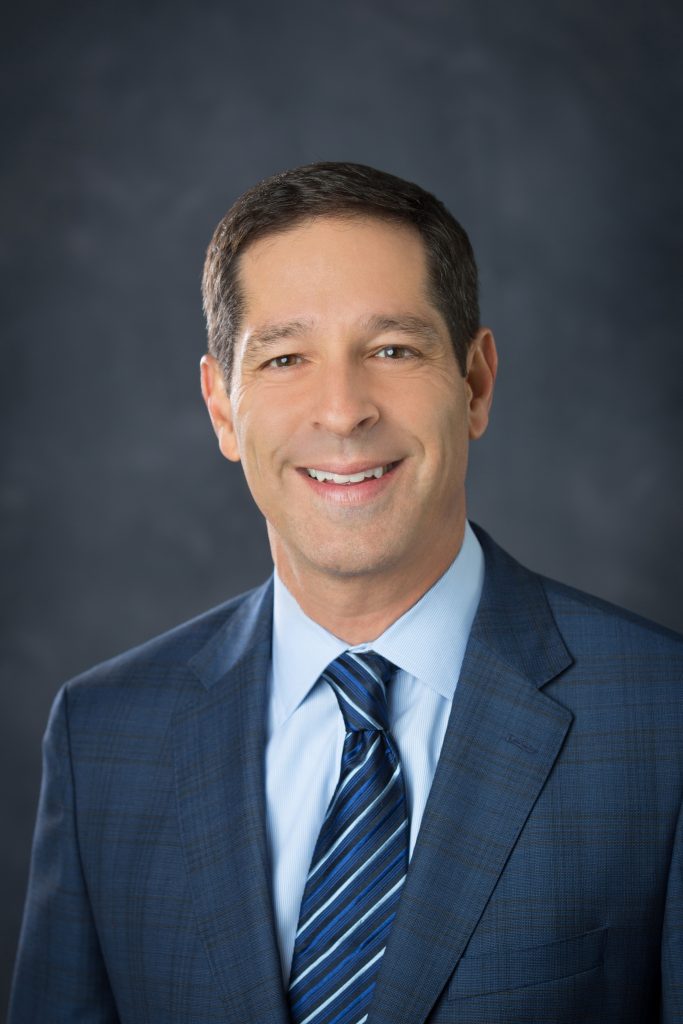 CEO of Renaissance
CEO of Renaissance
What His Current Focus Is: Daniel is focused on building an organization that delivers powerful student growth data and insights. He believes actionable data is key to personalized learning, and this data is at the heart of Renaissance solutions. Educators can use assessments to understand what each student has mastered, and then place students into the right level of instructional curriculum. Renaissance is also increasing equity and access through its recent acquisition of myON, a provider of digital literacy solutions. By adding myON, Renaissance provides students with unlimited access to more than 13,000 digital books.
How He’s Transforming the EdTech Space: Daniel and team have launched Renaissance Flow 360, a solution that drives personalized learning by bridging assessment to instruction. It improves learning outcomes for every student, and provides centralized data on student mastery across multiple educational resources, including the top educational vendors.
What His Background Is: Daniel has nearly 20 years of experience in education. Prior to joining Renaissance in 2017, he was CEO of Adtalem Global Education (formerly DeVry Education), a global provider of educational services. He led Adtalem from 2006 through 2016 and drove its transformation from a domestic, single university to an industry-leading institution serving students around the world and across multiple disciplines.
What May Surprise You About Him: Daniel was brought up in a family that highly valued education, especially varied educational experiences. In fact, their rule was, “You can go to any college you want, as long as it’s Michigan.”
LinkedIn: https://www.linkedin.com/in/dmhamburger18/
Email: [email protected]
6. Bill Latham
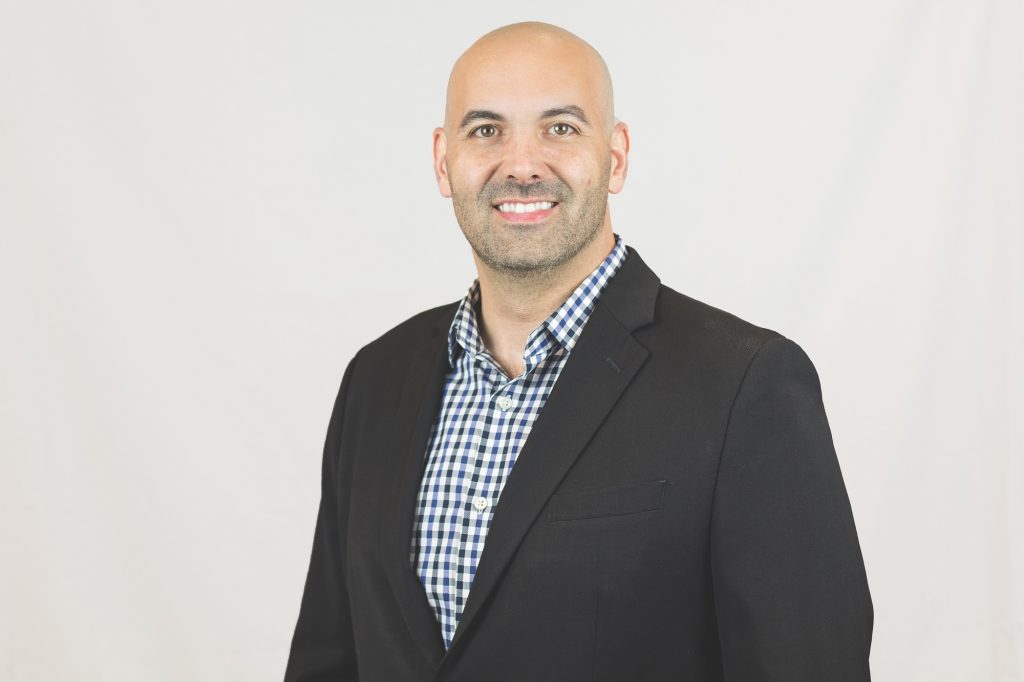 CEO, MeTEOR Education
CEO, MeTEOR Education
What His Current Focus Is: Bill Latham is CEO and senior program designer at MeTEOR Education, a company that inspires and supports communities and their students in creating transformational learning experiences. Focused on the strong interplay between pedagogy and support spaces, Latham is a leading global advocate for the constant, consistent support of best-practice instruction through living classroom environments. He and his team’s designs have led to measurable increases in basic literacy, collaborative learning, and complexity of student tasks at all grade levels. Latham is connected with leading global researchers and academics in the field, employing the latest best practice findings as he leads design work for classrooms, school buildings, and broader school systems.
How He’s Transforming the EdTech Space: Bill is a leader in the design and implementation of holistic, high-impact learning experiences and environments, he has consulted with schools, districts, and governmental agencies across the Western Hemisphere on the design, outfitting and implementation of classroom and school environments aligned to critical learning priorities for more than 15 years. He and his team have directly served more than 1,000 schools in the United States alone. Latham is an architect of the human engagement by design methodology. He focuses on the integration of foundational engagement frameworks, technology, furnishings, and space to drive specific-learning 21st Century college and career-ready outcomes. He is the co-author of the book Humanizing the Education Machine: How to Create Schools That Turn Disengaged Kids Into Inspired Learners (Wiley; November 7, 2016).
What His Background Is: Bill holds a B.S. degree in Chemistry and an MBA from the University of Florida.
What May Surprise You About Him: He is active in martial arts and competes at a national level.
Twitter: @BillLatham3
Email: [email protected]
7. Arne Bergby
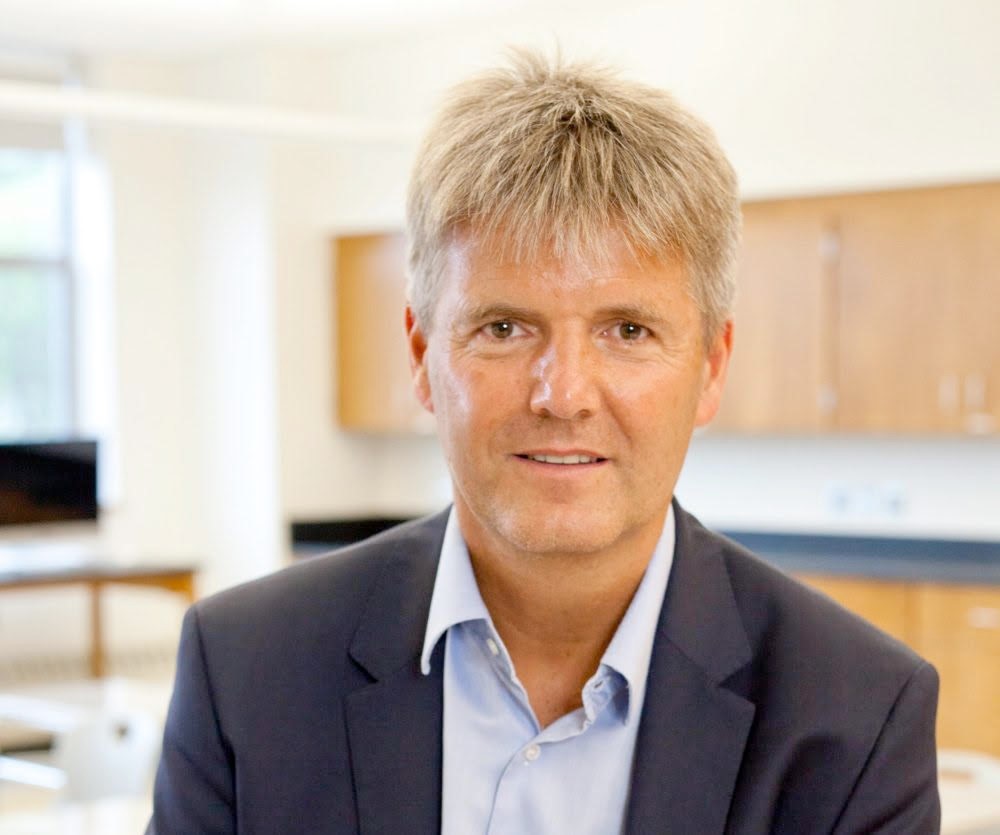 CEO of itslearning
CEO of itslearning
His Current Focus: Arne joined itslearning in 2004. Passionate about education and helping students and teachers succeed, he has led itslearning to be Europe’s largest provider of educational learning platforms. As CEO, his focus is on making the student-centered teaching and learning platform the ideal one stop shop for creating and delivering courses and assessments, managing standards-aligned content, enabling communication and collaboration for teachers, parents and students, and more.
Put another way, itslearning strives to remain at the heart of education. Under Arne’s leadership itslearning continues to gain market share in the United States as it partners with Houston (TX) Independent School District, Forsyth County (GA) Schools, Fort Worth (TX) Independent School District, Metropolitan School District of Wayne Township (IN) and San Bernardino (CA) City Unified School District – to name just a few. Designed for teachers and how they want to teach, itslearning is a cloud-based learning platform used by millions of teachers, students, administrators and parents around the world. It can be found at all levels of education, from primary schools to universities, helping teachers make education more inspiring and valuable for today’s students.
How He’s Transforming the EdTech Space: Arne is working to transform the education space by overseeing the continuous improvement and rise of itslearning as one of the world’s most robust and popular learning management systems. itslearning has over seven million active users worldwide, mainly in the United States, Norway, Sweden, Denmark, the Netherlands, the United Kingdom, France, and Germany. Made for today’s classroom, itslearning is one of the most innovative products in the global education sector.
His Background: Previously, Arne served as managing director of Tieto, one of the largest ICT companies in Europe. Arne received a Master of Management degree from the Norwegian Business School in 1987. He is a member of the Educational Consultants Network, K-12 Assistive Technology Professionals, and is on the Board of Directors of G.C. Rieber.
What May Surprise You About Him:
He’s fiercely competitive. Whatever your game — skiing, running, even cooking — he’s always up for good-natured competition.
Twitter: @ArneBergby
Email: [email protected]
8. Todd Brekhus

President of myON at Renaissance Learning
What His Current Focus Is: Todd believes that literacy, student choice, and personalized learning are the three keys to transforming learning for all students. myON’s expansive digital content library and literacy tools, paired with Renaissance’s complementary reading practice and assessment offerings, enables the company to deliver a comprehensive, innovative suite of reading solutions to educators and students worldwide. Todd and his team work to inspire the love of reading and learning by leveling the playing field with unlimited access to books. He is a lifelong advocate of reading and literacy.
How He’s Transforming the EdTech Space: Through myON’s literacy ecosystem, Todd and his team offer more than 4 million students instant and unlimited access to more than 13,000 enhanced digital books and daily news articles, real-time assessments, and close reading tools.
What His Background Is: As the President of myON at Renaissance Learning, Todd is focused on product development and providing educators tools to create a personalized learning environment. Before joining the edtech business community, he spent eight years in education as a teacher, department chair, and technology director. He has led successful edtech companies including Capstone Digital, PLATO Learning, Learning Elements, and MCI WorldCom, where he helped develop and implement the Marco Polo program.
What May Surprise You About Him: In high school, Todd was a competitive slalom ski racer.
Twitter: @ToddBrekhus
Email: [email protected]
9. Jay King
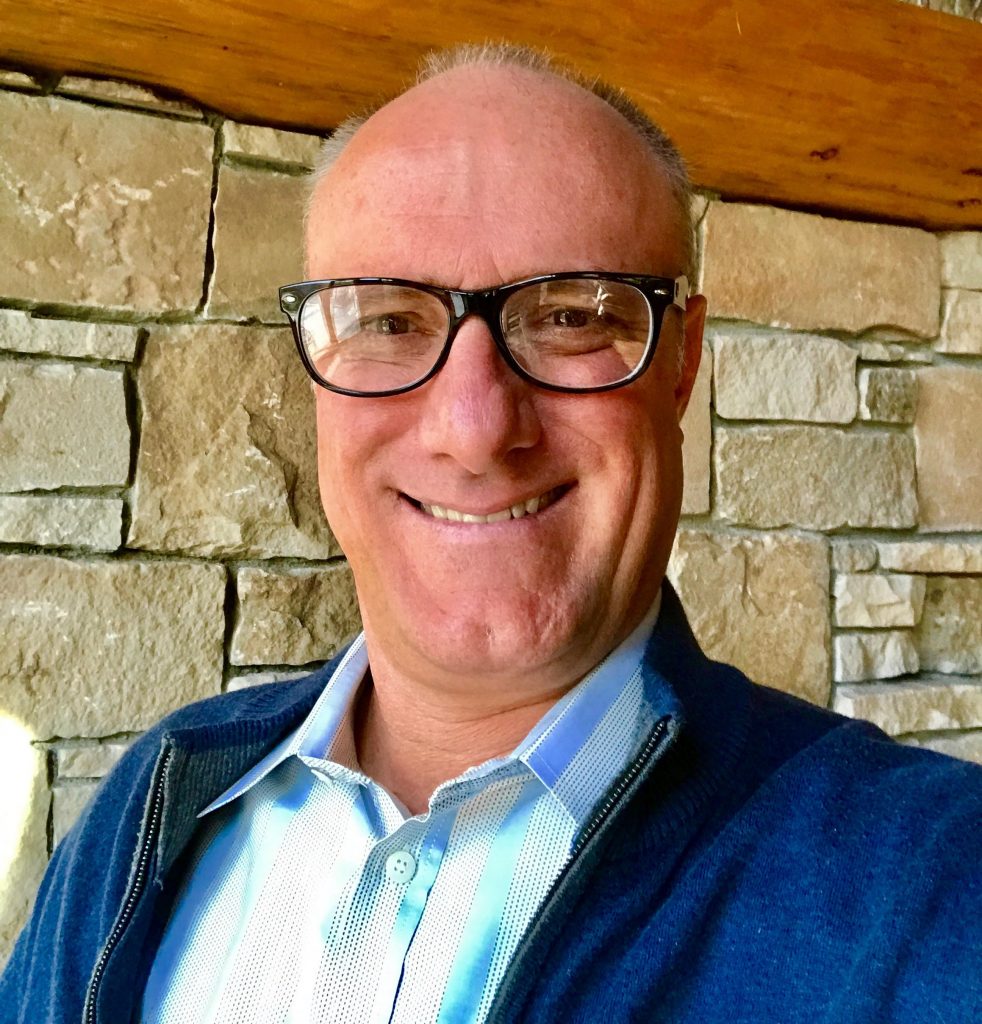 COO of StudySync®
COO of StudySync®
What His Current Focus Is: Jay is presently focused on serving as the COO of StudySync. Over the past year, Jay has traveled to several districts throughout California, Illinois, and Arizona to meet and learn from StudySync users, including districts in Geneva, Elgin, Huntley, St. Helena, Paradise Valley, and more. Recently, Jay has been instrumental in bringing StudySync’s new production studio to Petaluma, CA, his hometown. As a product of the Petaluma public school education, Jay believes that Petaluma encompasses a small-town culture, with strong community values, which are common throughout the U.S. and indicative of how K-12 education can have such a positive impact on society. The studio will be the site where several media productions are created, including StudySync® TV.
How He’s Transforming the EdTech Space: In 2009, Jay co-founded StudySync with StudySync’s CEO, Robert Romano. Their vision was to leverage technology and social learning to engage students in the great works of literature. As one of the nation’s most highly regarded literacy curriculums, StudySync provides these digitally-connected students with media-rich learning experiences, real-world topics, and a direct read-write connection, while giving teachers flexible digital tools and engaging print resources supporting teaching, differentiation, and standards-based assessment. In 2013 StudySync partnered with McGraw-Hill Education to exclusively distribute StudySync in the k – 12 market. The product has also received numerous prestigious awards including the coveted Innovation Award from the Association of Educational Publishers (AEP).
What His Background Is: Previously, Jay co-founded EdVantage Software, also with Robert Romano, and led the development of several award-winning products. After its acquisition of EdVantage, Jay led Riverdeep’s web development team, winning the prestigious CODiE award. With StudySync, Jay has led the development of StudySync’s ELA and SyncBlast products, which have gained wide acceptance and accolades. Jay has an M.S. in Accounting from Santa Clara University.
What May Surprise You About Him: Jay is a certified sports fanatic. He is probably watching ESPN right now.
Twitter: @johnjking
Email: [email protected]
10. Chris Twyman
 Co-Founder & CEO of BoomWriter Media
Co-Founder & CEO of BoomWriter Media
What His Current Focus Is: Chris’s passion is to make sure that edtech doesn’t widen the achievement gap. As an entrepreneur in the education industry, either you target your product at the schools that can afford to pay or you make sure everyone can use it and find a way to fund the business. The latter is a much bigger challenge than the former, but that is the mission of BoomWriter. If it is successful, it will narrow the achievement gap. Chris’s investors understand this mission, and everyone sleeps more soundly because of that.
How He’s Transforming the EdTech Space: Many kids don’t like writing, but they do like using their imaginations. BoomWriter allows students to inject imagination into their writing, making it super engaging. Engaged kids produce better work, and better writing impacts all other areas of education.
What His Background Is: Chris has always worked in the technology space. From his start in the UK through to living in Boston, he has worked at large software companies like Sybase, Computer Associates, and Tibco. Before founding BoomWriter, Chris was the founder and CEO of an HR technology start-up. Somewhere in there, he also squeezed in an MBA and is a partner in a small VC fund based in Miami.
What May Surprise You About Him: He has run the Boston Marathon twice and is a paid-up member of the Bigfoot Research Organization.
Twitter: @BoomWriter_
Email: [email protected]
11. Angela Maiers

Founder of Maiers Educational Services, Teacher, Writer
What Her Current Focus Is: With over 25 years of experience in education, Angela Maiers is a strong proponent of helping students feel passionate about learning and schools. She is the creator of the You Matter Movement and an advocate for the Genius Hour in schools. The You Matter Movement is centered on helping teachers help students feel seen, recognized, and valued which, in turn, helps them plug into their education. The Genius Hour is an idea she borrowed from Google’s 20% Time policy for their engineers. Under this theory, students are given (at least) one class period per week to pursue their passions under the tutelage of a teacher.
How She’s Transforming the EdTech Space: Maiers works to help teachers and students understand and employ the innovative power of technology. Through Twitter, Instagram, and other social media, Maiers encourages teachers and other adults to send Mattergrams, messages tagged #YouMatter that encourage students and children to recognize their power to impact the world in a positive way.
What Her Background Is: Maiers is an alumna of the University of Iowa. She received a Bachelor’s in Education. She also holds a Master’s degree in Education and Curriculum from Drake University. She has 28 years of teaching experience across a range of grade levels, and her work has impacted over 78,000 American classrooms.
What May Surprise You About Her: Maiers claims that the elementary school job of being the milk carrier is the most important, most coveted of responsibilities, and can be used as a microcosm of viewing your place in the world.
Twitter: @angelamaiers
Email: [email protected]
12. Nichole Pinkard
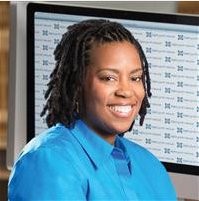 Associate Professor at DePaul University in the College of Computing and Digital Media
Associate Professor at DePaul University in the College of Computing and Digital Media
What Her Current Focus Is: Pinkard is an Associate Professor at DePaul University in the College of Computing and Digital Media. Her research is focused on the design and use of pedagogical-based social networks, new media literacy learning outcomes, ecological models of learning and developing pathways for urban youth. She is a strong advocate for digital literacy and believes that it will lead a revolution in the world of education. This is why she founded the Digital Youth Network in 2006. This Network seeks to help educators learn to teach with technology and digital media. It further seeks to ensure that technology is available to everyone, regardless of their socioeconomic background.
How She’s Transforming the EdTech Space: Pinkard founded the Digital Youth Network (DYN) in 2006, and she has been creating initiatives that transform the edtech space every since. The DYN model begins with sixth to eighth-grade education and focuses on mandatory in-school media arts classes and optional after-school programs. She was also a co-founder of YOUmedia, a public learning space for teens that immerses students in a context of traditional media to produce new media artifacts like games, videos, and virtual worlds. In April 2010, Pinkard co-founded RemixWorld along with Robert Chang. RemixWorld is a cloud-based social learning network for primary and secondary education, which seeks to safely and securely connect children and adolescents with curriculum, extended learning, and mentorship opportunities.
What Her Background Is: Pinkard holds a B.S. in Computer Science from Stanford University, an M.S. in Computer Science from Northwestern University, and a Ph.D. in Learning Sciences from Northwestern University.
What May Surprise You About Her: Nothing. We mean that in a good way.
Twitter: @npinkard
Email: Nichole can be contacted via her website: http://digitalyouthnetwork.org/#our-team
13. Steven Anderson

Co-founder of #EdChat on Twitter, Education Consultant
What His Current Focus Is: Steven Anderson is an educational expert who focuses on the fusion of technology and social media in pedagogy. Anderson is a blogger and a former classroom teacher and district technology director. He hosts the weekly #EdChat on Twitter, which boasts over 1500 participants each week. Anderson’s #EdChats have earned him the Twitterer of the Year distinction twice.
How He’s Transforming the EdTech Space: Anderson works to help teachers meet students in the places where they live: the digital universe. He travels the country, speaking at schools and conferences about how to safely and appropriately integrate social media in classrooms and how to leverage students’ knowledge of technology to help them learn and grow.
What His Background Is: Anderson is a native of North Carolina, where he still currently resides. He earned his bachelor’s degree in Middle-Grade Math and Science Education from Western Carolina University and then obtained a Master’s degree in Instructional Technology from East Carolina University. He was the director of technology at Winston-Salem/Forsyth County Schools in Winston-Salem, NC.
What May Surprise You About Him: Anderson is also the author of 3 books geared toward educators and administrators about efficacy in using technology.
Twitter: @web20classroom
Email: [email protected]
14. Rafranz Davis
 Executive Director of Professional and Digital Learning for Lufkin ISD
Executive Director of Professional and Digital Learning for Lufkin ISD
What Her Current Focus Is: As Executive Director of Professional and Digital Learning, Rafranz helps educators to effectively implement digital learning into their classrooms. She is a speaker, blogger, and an edtech advocate who is never afraid to speak truth to any situation. She is a voice for diverse perspectives in edtech, which have been missing since edtech’s inception. She is the author of The Missing Voices in EdTech: Bringing Diversity into EdTech, a book that puts a spotlight on the fact that the education community has failed to consider the viewpoints of people of color in discussions about edtech.
How She’s Transforming the EdTech Space: By advocating for diverse populations in edtech, she is giving a voice to a population that edtech influencers and policy makers have never acknowledged. Because of her, and people like her, discussions around the intersection of edtech and diversity have increased exponentially. Just visit your favorite edtech blog or read the keynote and presentation titles at your favorite conference. Not to mention, when it comes to the implementation of edtech in an educational environment, Rafranz is a trailblazer.
What Her Background Is: Rafranz obtained an associate’s degree from Navarro College and bachelor’s and master’s degrees from Texas A&M University–Commerce. Since her undergraduate days, she has devoted her life to helping educators implement technology in educational environments. She was a middle school math teacher before becoming a curricular strategist and technologist.
What May Surprise You About Her: Rafranz is never afraid to call a spade a spade.
Twitter: @rafranzdavis
Email: Rafranz can be contacted via her website: http://rafranzdavis.com/

Founder & CEO of Bloomz, Inc.
What His Current Focus Is: Chaks is focused on continuing the fast growth of the Bloomz app, an easy-to-use parent-teacher communication tool for today’s parents, who are used to communicating through their smartphones. Bloomz has a familiar social media interface that encourages parents to participate in their child’s learning and connect with their teacher through a secure platform. With the launch of their school-wide offering, Chaks has also created a powerful premium subscription for school administrators that includes useful data analytics, premium access for all their members, and unlimited membership and storage.
How He’s Transforming the EdTech Space: Chaks has helped bring Bloomz to more than 39,000 schools around the world by combining a social networking experience with a comprehensive set of tools—messaging and media sharing, calendar, signups, and student behavior tracking—in one friendly, easy-to-use app.
What His Background Is: Before creating Bloomz, Chaks applied his computer science and engineering education at companies such as Microsoft, AskMe, and most recently as the vice president of product and partnerships at GlobalScholar, where he focused on building an end-to-end learning platform to connect teachers, students, and administrators. He founded Bloomz, Inc. in January 2014 and serves as the Founder and CEO.
What May Surprise You About Him: Chaks created Bloomz after he and his wife both fell ill and had communication difficulties with his children’s teachers.
Twitter: @achaks
Email: [email protected]
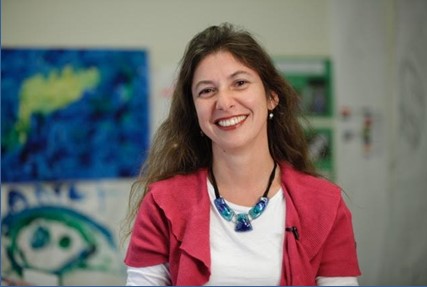 Co-founder and chief scientist at KinderLab Robotics, Inc., and a professor at the Eliot-Pearson Department of Child Study and Human Development and the Computer Science Department at Tufts University, where she directs the DevTech research group.
Co-founder and chief scientist at KinderLab Robotics, Inc., and a professor at the Eliot-Pearson Department of Child Study and Human Development and the Computer Science Department at Tufts University, where she directs the DevTech research group.
What Her Current Focus Is: Dr. Bers is focused on innovative learning technologies to promote positive youth development. Her research focuses on how technology, such as robotics and programming languages, promotes new ways of thinking and learning in early childhood. With Dr. Bers’ approach, introducing computational thinking in early childhood, students learn to be creators and collaborators with technology and with each other. Her most recent book explores coding as a “new language”, and how it can be presented in a playful context, merging STEM/STEAM and coding with social-emotional learning.
How She’s Transforming the EdTech Space: Dr. Bers developed the KIBO robot kit for children 4–7, which is programmed with wooden blocks without keyboards or screens, and is used in 52 countries. She also co-developed the free ScratchJr programming language with over 9.5M downloads.
What Her Background Is: Dr. Bers did her undergraduate at Buenos Aires University, and received a Master’s degree from Boston University and a Master of Science and PhD from the MIT Media Laboratory, where she studied under Dr. Seymour Papert, world-renowned pioneer in developing the first programming language for children, LOGO. She has received prestigious awards, has written four books, and in 2014 did a TEDx talk titled “Young programmers – think playgrounds, not playpens.”
What May Surprise You About Her: Dr. Bers is from Argentina, has three children, speaks four languages, dances tango, and has worked all over the world.
Twitter: @marinabers
Email: [email protected]
17. Vicki Davis

Creator of the Cool Cat Teacher Blog, IT Administrator and Teacher at Westwood Schools
What Her Current Focus Is: Vicki Davis is a current school teacher and blogger. She is also a freelance writer who focuses on professional development for teachers, inspiring them to use technology and build meaningful relationships with their students. Through her blog and her two books, she reaches hundreds of thousands of teachers, inspiring them to share their trials and triumphs and learn from one another, creating a holistic, wholesome environment to foster student achievement.
How She’s Transforming the EdTech Space: Davis’ blog, the Cool Cat Teacher Blog, has garnered much attention and numerous awards, including the Edublogger Award for Best Teacher Blog. Her current project, the global collaborative app project MAD About Mattering, encourages students to create “apps that matter” in collaborative environments, applying the skills and knowledge they learn in the classroom to better the world around them.
What Her Background Is: Davis has been a full-time teacher and IT director at a school in Camilla, Georgia since 2002. She was inspired to begin pursuing professional and teacher development when she began to feel stretched thin – ineffective in the classroom and not as present as she would have liked at home with her children. Two of her children have learning differences, and she began her educational ministry in hopes to better understand students who learn differently like her own children.
What May Surprise You About Her: Davis and her students have traveled all over the world, including to Qatar, India, China, Hawaii, and UAE to present to teachers worldwide about the impact of technology.
Twitter: @coolcatteacher
Email: Vicki can be contacted via her website: http://www.coolcatteacher.com/contact/

Co-founder of #EdChat, Creator of 30 Goals Challenge for Education
What Her Current Focus Is: Shelly Sanchez Terrell is an international speaker and e-learning and digital learning specialist. She has worked with teachers and taught English language learners in over 20 countries. She has also been recognized as one of Microsoft’s Heroes for Education for her work promoting teacher-driven professional development and the integration of technology in the classroom. Terrell offers webinars and online presentations each week to reach out to teachers across the United States and the world.
How She’s Transforming the EdTech Space: Terrell has inspired over 10,000 teachers to transform their classrooms through her 30 Goals Challenge, which guides the teacher to integrate new technology in his or her classroom, avoid the dreaded “teacher burnout,” and reconnect with students. The Goals Challenge helps teachers set both short- and long-term goals to reinvigorate his or her passion for education.
What Her Background Is: Terrell received her Bachelor’s degree in English from the University of Texas at San Antonio, and her Master’s degree in curriculum instruction ESL from the University of Phoenix. She worked as an ESOL teacher and social media community manager before shifting her focus to teacher training and outreach.
What May Surprise You About Her: Terrell has not only taught English to language learners in the United States but has taught abroad in Germany and to online learners in Spain as well.
Twitter: @shellterrell
Email: [email protected]
19. Eric Sheninger
 Award-Winning Former Principal and Author
Award-Winning Former Principal and Author
What His Current Focus Is: Eric is an award-winning former principal who is changing the way that schools think about and also utilize technology. His primary focus is helping schools harness the power of edtech and use it not only to connect with students but also to help them achieve academically. He is an accomplished speaker and author who tweets about all things education.
How He’s Transforming the EdTech Space: Eric is an avid blogger, and his thought-provoking and practical posts shed light on the need for thoughtful technology implementation, more effective learning strategies, and stronger school branding, among other ideas. He is helping schools lead and learn in a digital age. He is responsible for Pillars of Digital Leadership, which is a framework that seeks to transform school cultures.
What His Background Is: Eric is a senior fellow and thought leader on digital leadership with the International Center for Leadership in Education. Before that, he was an award-winning Principal at New Milford High School. Under his helm, the school became a globally recognized model for innovative practices in edtech. Sheninger holds two bachelor’s degrees — a B.S. from Salisbury University and a B.S. from University of Maryland Eastern Shore — and a master’s in education from the East Stroudsburg University of Pennsylvania.
What May Surprise You About Him: Even with his busy schedule, he has found time to write 5 books.
Twitter: @e_sheninger
Email: [email protected]
20. Lucy Gray

Education Consultant, Co-founder of the Global Education Conference
What Her Current Focus Is: Lucy Gray is an educational consultant, Apple Distinguished Educator, and Google Certified Teacher. Gray’s consulting is focused on presenting to teachers and staffs about best practices in technology integration, information literacy, global education initiatives, and harnessing the power of social media. Currently, Gray is working as an innovation coach, mentoring elementary school teachers to explore and create mobile learning opportunities.
How She’s Transforming the EdTech Space: Gray creates hands-on experiences for teachers, coaching them through the process of creating cultures of creativity and innovation in their schools. Instead of simply presenting or lecturing, she dives into schools, meeting regularly with their employees to promote positive change. She also works as a liaison in transitioning schools toward 1:1 technology integration.
What Her Background Is: Gray received her degree in art history and elementary education from Beloit College in 1989, followed by a Master’s degree in technology in education from National-Louis University in 2002. She has taught in the Chicago Public School system, University of Chicago Laboratory Schools, and has worked in various capacities at the University of Chicago.
What May Surprise You About Her: Gray makes all of her consulting presentations available for free on her web page at http://www.lucygrayconsulting.com/presentations.php
Twitter: @elemenous
Email: [email protected]
Conclusion
As you can see, there is no shortage of global edtech influencers out there. Who did we forget? Do you have any edtech influencers who you know and follow? Let us know.
How to Use Technology to Prevent School Bullying
Every year during October, schools, and organizations all over the world celebrate National Bully Prevention Month. The goal: increase awareness of the effects of bullying on children of all ages, and motivate community stakeholders to collaborate to end all forms of bullying. Over a decade old, National Bullying Prevention Awareness Month was initiated by PACER’s National Bullying Prevention Center in October 2006. Since its start, the event has grown to an entire month of learning and awareness activities, which are designed to help individuals become more aware of the grave consequences of bullying.
Every October, I am approached by organizations looking to bring awareness to this cause. In response, I send out their messages and resources to my social media followers, but that’s about it. Well, this year, I am to stepping my game up. To support National Bully Prevention Month, I decided to author an article aimed at helping schools use edtech solutions to prevent bullying.
Bullying in the era of hyper-connectivity
The proliferation of edtech in schools has given students an entirely new way to connect and communicate. Unfortunately, being able to access the internet also tempts students to peruse inappropriate content, or harass and bully their peers. The irony in this is that although technology is the root cause of a significant number of problems in modern schools, it can also be used to prevent them before they start or solve them once they occur.
To save students from their own curiosity, many schools block access to all websites that are not education related; especially social media sites. This certainly can stop cyberbullying, but it also prevents students from becoming responsible digital citizens. Also, the act of blocking websites is not a perfect science, and the lack of flexibility always causes issues for the teaching and learning process. Ordinarily, sites like Facebook would be flagged as inappropriate and blocked district-wide, but what if they are needed by high schools seniors studying digital marketing?
Overall, blocking social media sites does not stop cyberbullying. The proper response is to educate students about appropriate online behavior and how to be good digital citizens. This approach needs to be coupled with online monitoring, which includes tracking the search terms that students use, what they talk about on social media, as well as the websites that they visit.
How can edtech help schools prevent bullying?
More than ever, we need innovative ways to keep our student’s safe in today’s hyper-connected world. How can edtech help? Companies like NetSupport are creating software solutions designed to help schools stop bullying events before they start, and respond appropriately to bullying that becomes fully realized. Their award-winning IT Asset Management and Internet Safety solution, NetSupport DNA, helps technicians to track, monitor, and manage IT assets across individual schools and entire districts.
NetSupport DNA contains a “Report a Concern” tool that students can use to quickly and anonymously report any issue that they are encountering to an adult that they trust. With its most recent update, teachers can also use the same tool to report an issue in situations where they are verbally told of a student’s concern. In addition to reporting the issue, students also have access to the contact information for several national support organizations. These organizations can help support students in ways that underfunded school districts cannot. Empowering students to confront bullying can give them the confidence they need to attend school without fear.
School IT administrators can use NetSupport DNA to schedule real-time monitoring and search for exact phrases and keywords in several languages to keep an eye on suspicious activity. Keywords are presented in a word cloud format, along with other intuitions, so school officials can be alerted to recurring themes across groups of students. If keywords or phrases suggest bullying or harassing activity that may place the student in danger, they would be presented in the word cloud. In addition to being presented in the word cloud, the term is also placed into the original context in which it was used.
When an alert is triggered, the system can ascertain the threat level of the phrase and use differing sensitivity levels based on the time and context in which the phrase was used. To document instances of cyberbullying, educators can capture screenshots and video clips of bullying episodes. Teachers can use the word cloud feature as a springboard for discussing the significance of having a positive online footprint. This can help educators prevent cyberbullying and help students gain invaluable digital literacy skills.
NetSupport DNA gives schools the context that they need to piece together the full picture, instead of trying to decipher bits of information. School staff can avoid “false positives” by determining the context of possible matches. If a keyword is triggered and reviews as a false alarm, a “false alarm” note can be added. By looking at a student’s entire journey, not just the end event, schools are able to spot trends and issues that would have ordinarily been overlooked.
Let’s look at a practical example. A student searches for ‘Smith & Wesson,’ which is a company that manufactures firearms. Thankfully, the school IT staff have included phrases and keywords related to various types of firearms into the keyword database. As soon as the student initiates the search, the system is triggered, and the school IT staff are alerted. They inform the principal, who decides to investigate the matter further. She finds out that the student who conducted the search recently reported that they were being bullied by a classmate. The alleged bully had been disciplined, and she thought the issue had been resolved.
She sits down with the bullying victim and asks him about the search. He says it was a mistake and blames it on Google’s autocomplete feature, but who knows what the truth is. The principal sends him back to class and puts together a plan to monitor the situation further. She knows that students who are being bullied and feel like they have no other options may resort to gun violence to protect themselves. We know the story all too well. A student walks into a school with a loaded gun, and tragedy ensues. Edtech apps like NetSupport DNA can help you prevent this from happening.
Conclusion
As educators, we have a professional obligation to make schools and classrooms safe environments for all students. To achieve this, we must actively deliver the message that bullying is wrong in all circumstances and be proactive in preventing it. However, in today’s hyper-connected world, we can’t be everywhere and see everything that happens within our learning environments. Well, not until now.
With technologies like NetSupport DNA, schools can monitor their student’s activity at all times, even if they are on the other side of the classroom. By putting power like this in the hands of educators, we ensure that bullies don’t stand a chance.
Course Review: Staying Present: Mindfulness for Better Teaching and Learning
Have you ever thought about the kinds of things that you accomplish before the school bell rings to signal the end of the day? In all probability, you would have run from one end of the playground to another some fifteen times if not more, handled disputes and power struggles and shouted louder than the football coach on the field. Unfortunately, a teacher does not have the luxury of checking into a spa for a few weeks to remove all the stress that is causing them to grow old faster. So, what can the modern teacher do to stay calm, while so much chaos is happening around them? One word. Mindfulness. Yes, mindfulness.
What exactly is mindfulness? Mindfulness is a set of strategies that have been used for several millennia to help people be “present” and in the moment, instead of focusing on distractions and stressors. Mindfulness is accomplished by calming the mind and becoming more aware of your emotions, cognitions, and body. Staying “present” helps you to increase your focus, improve your socio-emotional intelligence, and enhance your physical health. Studies have shown that incorporating mindfulness techniques and strategies in the classroom provides several teaching and learning benefits. Students and teachers are calm, at peace, and become in full control of their mind, body, and soul, which allows them to have more success in the classroom.
Recently, I had the pleasure of demoing an online professional development course entitled “Staying Present: Mindfulness for Better Teaching and Learning,” which teaches the practice of mindfulness to educators. The class was created by Advancement Courses, an innovative education development company that provides continuing education to educators. In this course, I learned a plethora of tips and strategies for implementing mindfulness in the classroom. I was able to work at my own pace and felt at ease as I participated in activities that are designed to help educators center their body, mind, and spirit, and handle stressful moments.
I appreciate the care and attention that was put into developing this course. Advancement Courses only employs authors who are expert teachers with extensive classroom experience. They design each course to be meaningful, engaging, and classroom applicable. Classes are not just filled with innovative techniques and perspectives, but also show what these tools look like in practice.
I love how the syllabus includes a section entitled “Connections to the Classroom” that explains how the course plans to help you turn theories of mindfulness into sound professional practices. Also, the “Course Objectives” section was a standout, as it does a superb job of stating the skills that educators will attain by taking the course. This is standard information that all online courses have, but you wouldn’t believe how many education companies do a horrible job of writing course objectives.
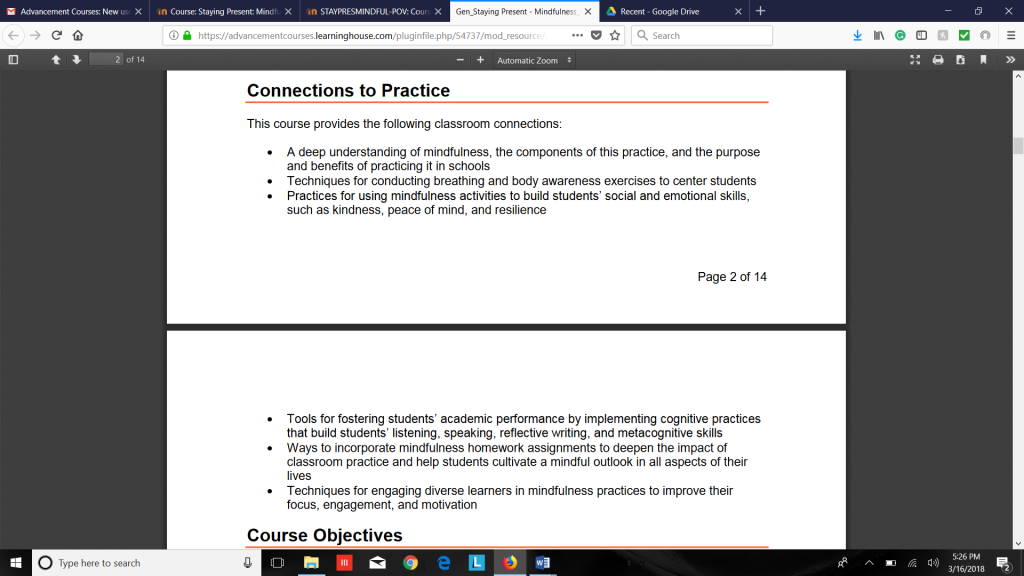
Another bonus is that all courses are led by facilitators with a proven track record of supporting teachers across content areas and grade levels. Facilitators help guide you through your course by answering questions, offering detailed feedback on assignments, and more. They have a deep understanding of national standards like the Common Core and Next Generation Science Standards, and I do not doubt that their feedback is constructive, research-based, and thorough. If you have technical or course-related questions, your facilitator and the support team are available to help.
The coolest feature of the course was the community space, which gives you access to a professional learning community comprised of like-minded professionals across the world. It’s a place for you to share resources, explore innovative ideas, and connect with other educators. Whether you’re looking to incorporate new teaching strategies, problem solve or enhance your lesson plans; it’s your chance to interact and learn from your peers. You can access this space via the “Community” link at the top of the eclassroom in any course.
The community space includes discussion forums where you can engage with other educators in ongoing conversations, share and get feedback on ideas, and post questions. It also has a searchable database of articles, blogs, websites, videos and other contributed content and includes integrated sharing and social tools to make participating and extending the conversation easy. The community space also provides social networking opportunities via Facebook, Pinterest, etc.
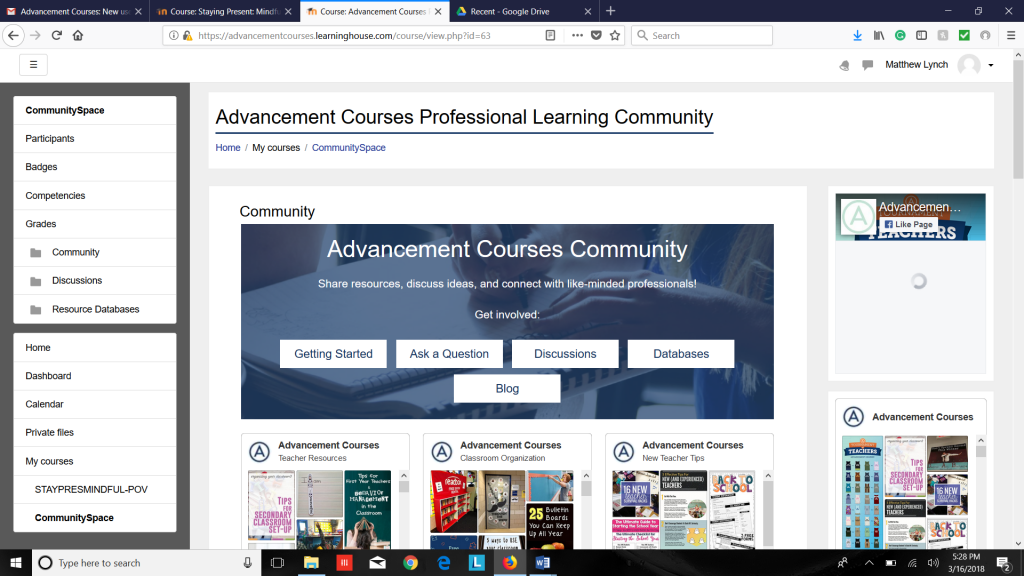
I love the fact that the course is not tied to a semester, and can be taken anytime, anywhere – with up to six months to complete. This gives busy educators the opportunity to expand their knowledge at a pace that works for them. Also, you can complete the course in two formats, online and print. If you choose to take an online course, you’ll analyze real classroom footage of best practices in mindfulness and engage in interactive tasks. You can complete your online coursework on a variety of digital devices, even smartphones, and tablets. If you choose a print course, you’ll delve deeply into a selection of texts and multi-media to gain a greater understanding and learn new mindfulness strategies. No matter what format you choose, I know you’ll enjoy the course and be able to start implementing what you have learned immediately into your practice. The courses are available in non-credit or grad-level credit versions, and even come with a transcript.
After I completed my demo of the course, I felt empowered. I was confident that I had the tools that I needed to create an energized, interconnected, and kind classroom culture where every student is engaged, motivated, and passionate about learning and can stay present even in stressful situations. Thanks, Advancement Courses. I wholeheartedly recommend this course to all classroom teachers, administrators, paraprofessionals, etc. who are striving to live a stress-free personal and professional life. You won’t be disappointed.

